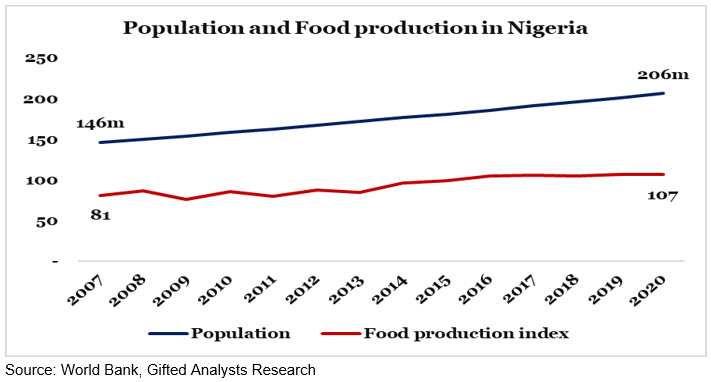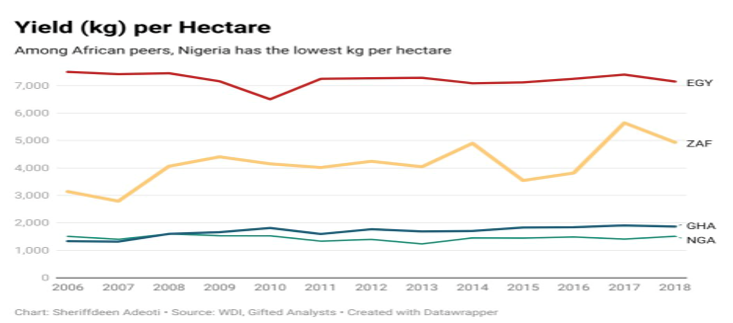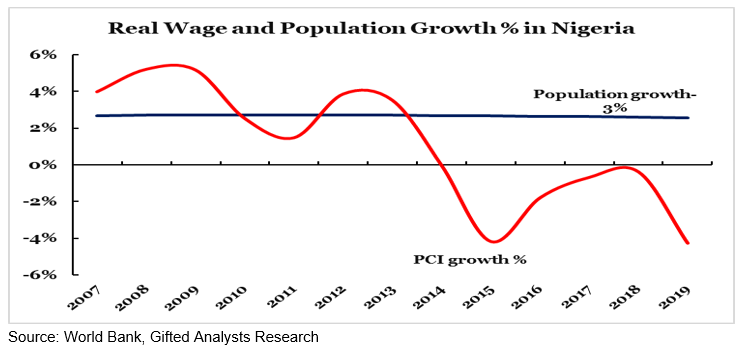In the 1800s, while examining England’s economy, a prominent scholar Reverend Thomas Malthus postulated that man’s population growth would eventually outstrip the means of agriculture and food production. Malthus indicated that man’s continuous population growth, with limited resources, will eventually compete with the inflexible means of production. Thereby leading to malnutrition, war, famine, and a downward spiral of civilization. However, people refuted his prognosis of doom for civilization. In all honesty, Malthus’s theory can only be classified as a doom theory. The world’s population has grown to over 7 billion, and food production has been able to match due to advanced food technology, food storage, and processing.
Malthus’s proposition was based on the reality of explosion in population, limited advancement in medicine and agriculture. Malthus did not account for man’s ability to adapt, adjust and challenge the status quo. Shortly after, the industrial revolution began, food production not only matched population, there was also an increase in the standard of living, access to social amenities, reduction in mortality rate and affordable housing for the populace.
Was Malthus theory all a fallacy?
Two centuries after Malthus’ infamous doom’s theory, his postulation is still prominent in examining developing economies, despite the advancement in technology, food storage, and medicine.
South of the Saharan desert, Nigeria – a country of 206 million people still languishes in extreme poverty, despite abundance of human and natural resources. In 2020, Nigeria wrestled Indian to become the ‘Poverty Capital of the world’, with over 80 million of its population living below the poverty line. Nigeria’s population exploded from 60 million at independence – 1960, to 150m in 2010. Currently, Nigeria has a population of 206 million, growing at a 2.67% annual CAGR. Meanwhile, Nigeria’s food production index (normalized to 100), currently at 107, is a 2.10% annual CAGR between 2007 and 2020.

Population growth outpace food production in Nigeria
According to Nigeria consumption expenditure report, in 2019, Nigerians spent N21.6 trillion on food consumption, representing 56.65% of total household expenditure. For a developing country like Nigeria, the consumption pattern is skewed towards food i.e. food is higher than the non-food items. Whereas, in most advanced countries, it is the opposite, the consumption pattern is skewed towards non-food items.
The FAO outlined that Nigeria is a net importer of food with an annual import bill of $3 billion. Although Nigeria’s agricultural sector is large, accounting for 24.14% of the GDP in 2020, it is still mainly conducted by small-scale subsistence farmers, which leads to low productivity and poor return on investment.
“Food security in Africa’s most populous country is challenged by rapid population growth”. – FAO 2020

Large scale subsistence food production, persistent insecurity, bad road network, lack of storage facilities, and slow adoption of technology in farming have meant low farm yield over time. In comparison to Egypt, South Africa and Ghana, Nigeria has the lowest yield per hectare. Notably, Nigeria has around 1500 kg per hectare, whereas Egypt possess 7000 kg per hectare, South Africa around 5000 kg per hectare and Ghana’s 2000 kg per hectare.

Shrinking real wage rate, rapid Population growth
Malthus argued that a rise in the standard of living resulting from an increase in real wages will sharply lower mortality rates, especially infant mortality, and thus lead to better standard of living, a rapid growth in population and labour supply.
With only 62% literacy rate, 10.5 million out of school children aged 5–14, Nigeria is not preparing its labour force to be productive and innovative, eventually causing mayhem to the society. , Also, there are also many over-aged students and students who repeat years; it takes nine years on average to complete the six primary school years. In 1950, Nigeria and South Korea both had a per capita income of around $800. In Nigeria, it had doubled to over $2,000 by 2008, while in South Korea, it had risen to over $19,000, a 13-fold increase. Currently, Nigeria and South Korea are two worlds apart, largely applicable to South Korea’s universal Education policy, whereas education languish in Nigeria.

From the figure, Since 2013, Nigeria’s real wage rate has been shrinking rapidly, whereas population growth is almost constant at 3%. Between 2007 and 2020, real wage grew mildly by 1.06% CAGR when compared to 2.67% population growth. Between 2015 and 2020, real wage shrank by 2.27%. An average Nigerian person can hardly meet daily ends.
Conclusion
The rise in social unrest, insecurity, banditry, and tribal clashes is caused by poverty and idle hands – terror-stricken hands scurrying for food. Despite the fact that Reverend Thomas is dead, he is correct in recommending a series of checks. These measures must be implemented to address the food crisis and rising unemployment. Nigeria must ensure food security, by improving food technology, invest in Research & Development (R&D), increase yield per hectare, and ensure a viable working environment for agriculture and food storage.
There should be forward-thinking policies in place by the government, such as policies to enable businesses to thrive and improve adult literacy, as well as consistent macroeconomic policies. Nigeria’s growing population will propel the country to economic prosperity due to large consumer demand, which will also attract foreign direct investment (FDI).